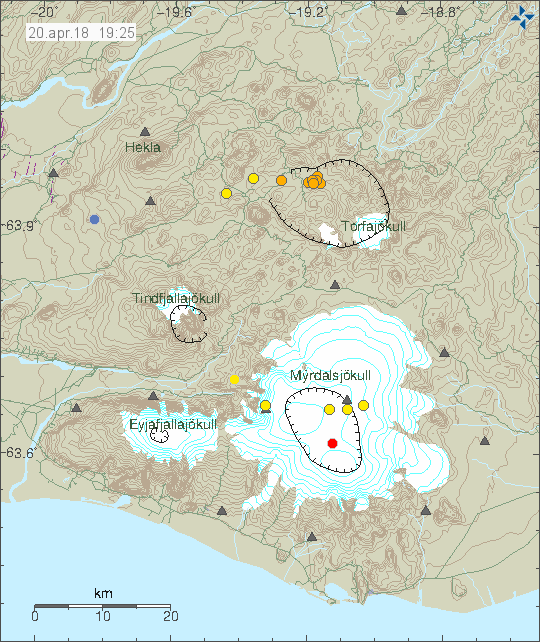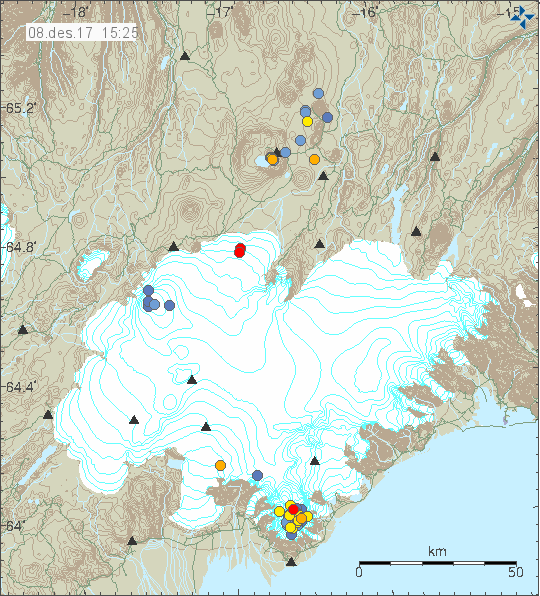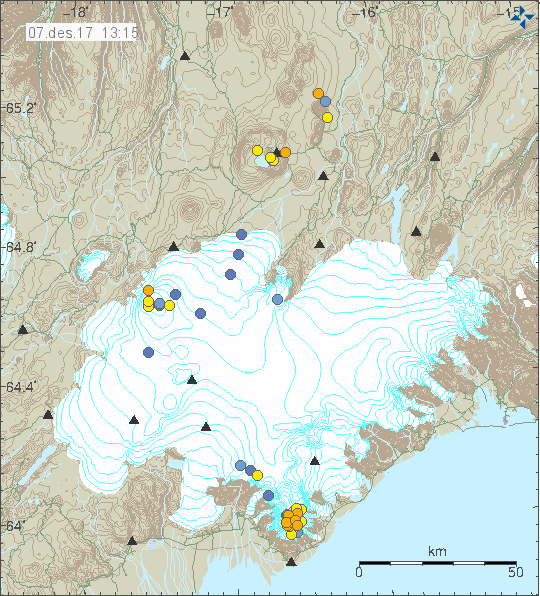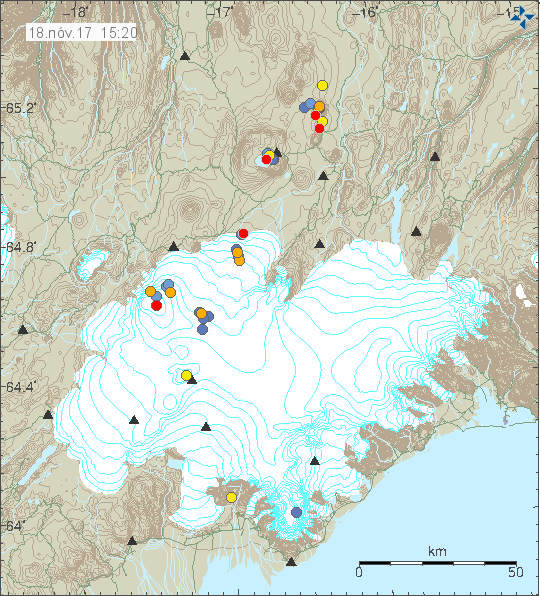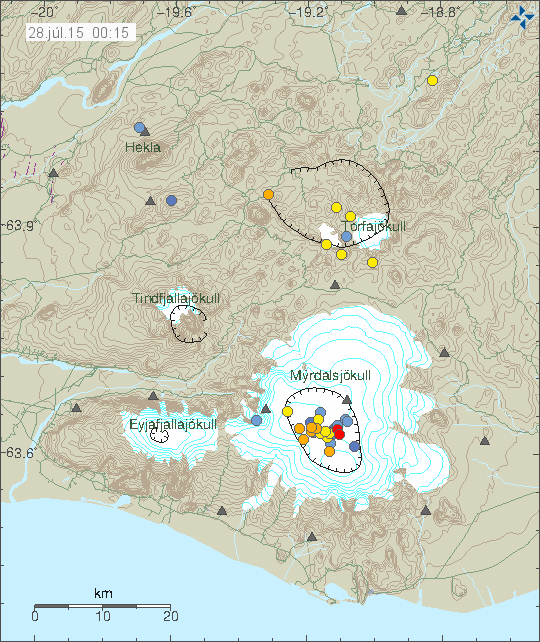Rúv News is reporting today (10. September 2023) that there has been noticeable increase in hydrothermal activity east of Keilir mountain since end of least eruption close to Litli-Hrútur mountain. According to the news, this shows that magma is now close to the surface without erupting currently. This area is rather large, it is between Keilir mountain and Trölladyngja mountain (part of Krýsuvík-Trölladyngja volcano). There have been reports of increased SO2 vents that is killing moss in this area, along with new steam vents that have been appearing in the last few weeks.
According to Þorvaldur Þórðarson volcanologist, there is a magma shadow in the area around Trölladyngja and that appeared around the time the eruption close to Litli-Hrútur started. This area was noticed by Thomas Fisher earthquake expert from Czech Republic did notice this area having almost no earthquakes at all. Showing that magma has pushed it self into the crust at this location at shallow depth.
The result of this is that next eruption might have more eruption vents, it might erupt at more than one fissure at the same time in parallel. What happens next is unclear, but this large area has gotten really warm and seems to be continuing to expand.
Rúv news
Fylgjast vel með auknum jarðhita austan við Keili (Rúv.is, has map of the area)

